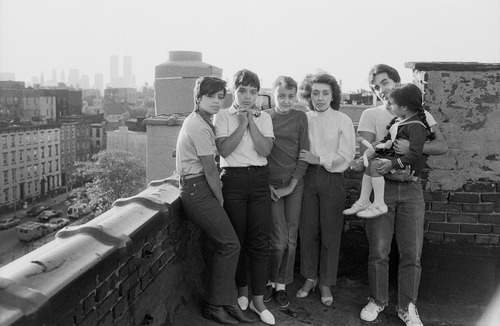
Christopher Allen in Conversation with Luc Sante
For the last five years, UnionDocs, a center for documentary arts in Williamsburg, Brooklyn, has been working to uncover a piece of their neighborhood’s history. It all started with a VHS copy of Diego Echeverria’s 1984 documentary Los Sures. The film, which was nearly lost, takes a look at the Southside neighborhood of Williamsburg when it was one of the city’s roughest. Echeverria did not, however, focus solely on drug use and gang violence. The film also captures the beauty andresilience of the deeply-rooted Puerto Rican and Dominican community, apopulation often overshadowed by representations of Brooklyn in the media today
as a place of over-priced coffee and fixed-gear bicycles. UnionDocs screened
the film in the neighborhood and they were blown away by the response. People
connected instantly. They recognized friends and family, remembered places, and
offered anecdotes about the struggles and celebrations of life in the Southside
throughout the decades.
The response inspired UnionDocs to embark on their
most ambitious project to date, Living Los Sures. With this new project
UnionDocs expands Echeverria’s film into an web-based experience. This includes
thirty new short documentaries about the neighborhood and its residents today,
an interactive feature called 89 Steps that updates the story of one of the
main characters in the film from 1984, as well as a “Shot by Shot”
deconstruction of Los Sures that graphs interviews, archival research,
vernacular photography and video onto individual shots in an elegant interface.
UnionDocs launched Living Los Sures this fall at the New York Film Festival and
are now in the final hours of a Kickstarter to raise the necessary funds to finish the project.
UnionDocs founder and Living Los Sures Executive
Artistic Director Christopher Allen sat down with writer Luc Sante to discuss the project. Sante, author of Low Life: Lures and Snares of Old New York and regular
contributor to the New York Review of Books, grew up in the New York of the
1970s.
I. NOT MUCH HAPPENS IN THE STREETS ANYMORE
CHRISTOPHER ALLEN: A good place to start might be with hidden histories in the
city: places that are overlooked, or places that become almost subconscious in
the narrative. In a way, that is what motivates Living Los Sures.
LUC SANTE: Well, one thing strikes me right away. I don’t know if this a
direct answer to your question, but it stuck out in my mind when this project
came up.
I moved around a fair
amount in my years in New York. I moved to the city in 72. I moved to
Brooklyn in 92. The neighborhoods I moved into...
You have reached your article limit
Sign up for a digital subscription and continue reading all new issues, plus our entire archives, for just $1.50/month.
Already a subscriber? Sign in




